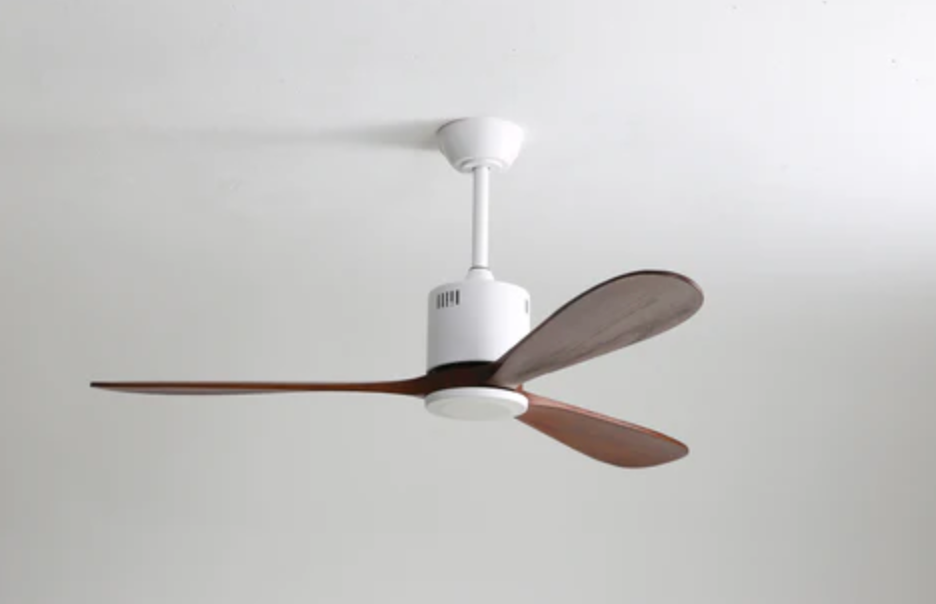
Choosing the Right Ceiling Fan Size for Your Room
Introduction: When it comes to selecting a ceiling fan, size matters. The proper size ensures optimal air circulation and comfort in your space. However, choosing the right ceiling fan size can be a daunting task, as there are various factors to consider. This article will guide you through the process of selecting the ideal ceiling fan size for your room, ensuring maximum efficiency and functionality.
I. Understanding Ceiling Fan Sizes Subtitle: Decoding Fan Size Measurements
Explaining how ceiling fan sizes are measured (by blade span or diameter)
Understanding the significance of fan size in relation to room dimensions
II. Assessing Room Size and Layout Subtitle: Room Proportions and Fan Diameter
Measuring and assessing the dimensions of your room (length, width, and height)
Understanding the relationship between room size and fan diameter
General guidelines for matching fan diameter to room size
III. Ceiling Height Considerations Subtitle: Optimal Clearance and Proximity
Determining the ideal distance between the fan blades and the floor
Considering the recommended clearance between the fan blades and the ceiling
Adjusting fan size based on ceiling height to ensure safe and efficient operation
IV. Room Function and Usage Subtitle: Tailoring Fan Size to Room Purpose
Considering the primary function of the room (bedroom, living room, kitchen, etc.)
Determining the airflow requirements based on room usage patterns
Matching fan size to specific room functions and comfort needs
V. Additional Factors to Consider Subtitle: Unique Room Characteristics
Examining unique room features (vaulted ceilings, sloped ceilings, open-concept spaces)
Adapting fan size based on specific room characteristics
Seeking professional advice for rooms with unconventional layouts or structures
VI. Style and Aesthetics Subtitle: Harmonizing Fan Size with Décor
Balancing fan size with the overall aesthetics of the room
Choosing a fan style that complements the room's interior design
Exploring various blade designs, finishes, and decorative elements
VII. Noise Considerations Subtitle: Balancing Performance and Comfort
Understanding the impact of fan size on noise levels
Selecting a fan size that delivers optimal performance without excessive noise
Researching fan models known for quiet operation
VIII. Professional Recommendations Subtitle: Expert Advice for Precision
Consulting with professional installers or electricians for precise recommendations
Seeking expert guidance for complex room configurations or installations
Incorporating professional insights for the best overall fan size decision
People also ask these questions
What happens if ceiling fan is too big for room?
A ceiling fan that's too big will overpower the room's design and visually pull the ceiling downwards; a fan that's too small won't properly circulate the air. Follow these ceiling fan size guidelines for the right proportions.
Is a 60 inch ceiling fan too big for a bedroom?
These dimensions are typical of a standard bedroom or kitchen — both of which can become quickly uncomfortable if there isn't enough air circulation. We recommend a ceiling fan with a blade span of 52- to 60-inches to ensure optimal airflow.
Is it better to push or pull ceiling fan?
During summer months, your ceiling fan blades should be set to spin counterclockwise. When your ceiling fan spins quickly in this direction, it pushes air down and creates a cool breeze. This helps keep a room's temperature consistent throughout the day and reduces the need for an air conditioner to run constantly.
Is it OK to leave ceiling fans on all night?
Although it could run for over a 24 hour period, it is still best to turn off your ceiling fan when you are at work or out of the house for an extended time to give the ceiling fans' motor a rest and reduce electricity use and cost.
How long do ceiling fans usually last?
Appliance life spans are widely published. Exhaust and ceiling fans are estimated to typically last for a maximum of 10 years while air conditioners last for 8 to 15 years.
Conclusion
Choosing the right ceiling fan size is crucial for achieving optimal air circulation and comfort in your room. By considering factors such as room size, ceiling height, room function, and unique characteristics, you can select the perfect fan size for your space. Additionally, balancing style, noise considerations, and seeking professional recommendations further ensures a well-informed decision. Remember, selecting the right ceiling fan size is a key step towards creating a comfortable and functional living environment.


